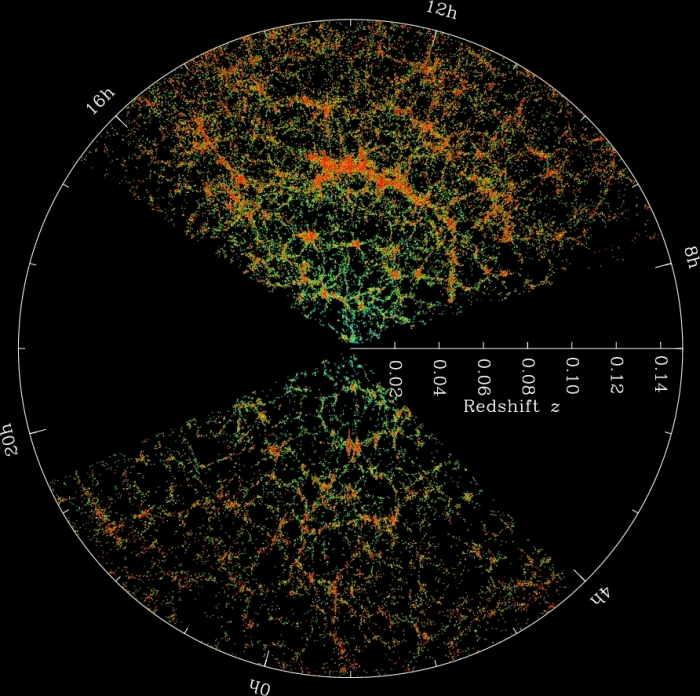Galaxies are collections of stars, gas and dark matter that play host to some of the most extreme processes in nature. Galaxies are also the signposts of the universe, beacons of light scattered throughout a mostly dark universe. Though galaxies are filled with the visible “stuff” of the cosmos, they are also critical laboratories in our search to understand the invisible: mysterious dark matter and dark energy.
There are millions of known galaxies in the universe and they come in various shapes, sizes and colors. These physical properties are thought to be determined, in part, by a galaxy’s surrounding conditions. Galaxies found in galaxy clusters, for example, tend to be elliptical and have little ongoing star formation. Isolated galaxies, on the other hand, are typically spiral in shape, blue in color and have active star formation. (The blue coloration is a product of star formation, which is a key characteristic of young galaxies; elliptical galaxies are redder since they are comprised of old stars, which emit light on the red end of the spectrum.)
It’s not just what’s on the outside of a galaxy that influences its structure. Large galaxies, for example, commonly host large black holes, and the innermost regions near these black holes pump out huge amounts of energy in the form of relativistic jets. These jets, moving at close to the speed of light, drive shock waves and inflate giant cavities filled with relativistic plasma, which rises buoyantly in the galaxies. This heats the surrounding gas and can catalyze star formation.
In addition to being places of convergence in the universe, galaxies connect the various strands of research at KIPAC. KIPAC researchers examine how a galaxy is affected by surrounding objects and whether it inhabits a dense or sparse region of space, near or far from other galaxies. Researchers are also interested in how galaxies influence their cosmic neighborhoods. In particular, scientists are seeking to understand how the constituents of a galaxy – like stars and black holes – interact with one another and the galaxy as a whole.
To detect galaxies, researchers use the light emitted by the stars within them. At KIPAC, computer simulations are used to study how these stars are born and how they interact. These simulations account for factors such as gas dynamics, gravity, chemistry, magnetic fields and outflows from stars. Using KIPAC’s supercomputing resources, virtual galaxies can be “built” one star at a time and studied in the laboratory.
Some critical research on galaxies happening at KIPAC is based not on what is seen, but what isn’t. For instance, cosmological simulations indicate that a galaxy such as our Milky Way should have hundreds of smaller, satellite galaxies in orbit around it. But researchers have only found a handful of these satellites. Is our galaxy special? Or are the satellites there but too dark for us to see? The answers to these questions are critical to our understanding of the nature of dark matter.
Click the images below to see a larger version

A galactic `super-volcano' in the massive galaxy M87 is erupting and blasting gas outwards, as witnessed by NASA's Chandra X-ray Observatory and NSF's Very Large Array. The cosmic volcano is being driven by a giant black hole in the galaxy's center and preventing hundreds of millions of new stars from forming.








